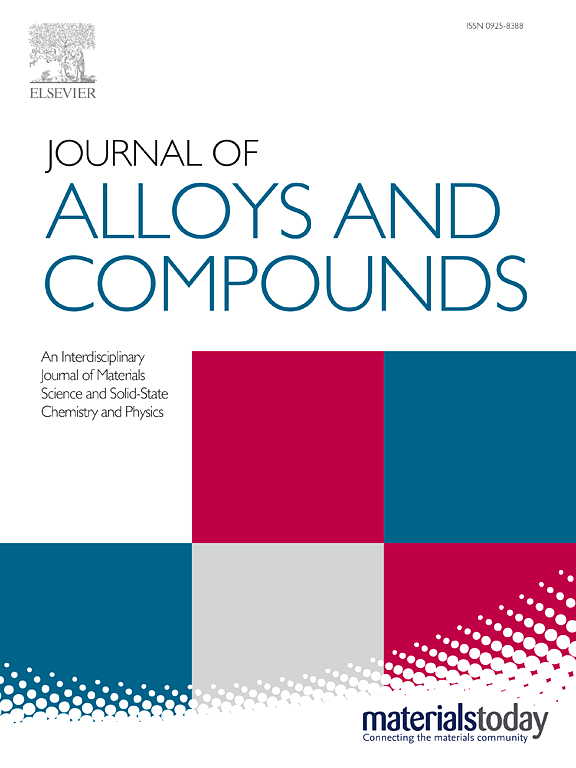Effect of ultrasonic surface rolling process on microstructure, mechanical properties, and wear resistance of Mg-1.9Mn-0.3Ce alloy
IF 5.8
2区 材料科学
Q2 CHEMISTRY, PHYSICAL
引用次数: 0
Abstract
This study investigated the effects of ultrasonic surface rolling process (USRP) on the microstructure characteristics, mechanical properties, and wear behavior of Mg-1.9Mn-0.3Ce alloy. The results show that a typical gradient microstructure with refined grains and twins was formed in the cross-sectional plane of Mg-1.9Mn-0.3Ce alloy after USRP. As set pressure increases during USRP, the depth of the severe deformation (SD) layer, the density of twins and refined grains increase near the surface of samples. Significant enhancements in microhardness and yield strength were achieved, though ductility was slightly reduced due to a shift in the fracture mechanism in the SD layer. The enhanced yield strength of USRPed samples can be attributed to several mechanisms, including grain boundary strengthening, dislocation strengthening and twin strengthening. The results of friction and wear tests reveal that the wear resistance of samples is significantly improved after USRP. The friction coefficient and wear rate of USRPed samples decreased with increasing set pressure, which were related to the formation of the harder surface and the modified microstructure. As the set pressure increases to 0.3 MPa, the primary wear mechanism of worn surface transitioned from abrasion and delamination wear to fatigue wear, indicating a shift toward more stable wear behavior. The optimal balance of minimal surface roughness, superior mechanical properties, and improved wear resistance was achieved in Mg-1.9Mn-0.3Ce alloy after USRP with 0.2 MPa.
超声表面轧制工艺对Mg-1.9Mn-0.3Ce合金组织、力学性能和耐磨性的影响
研究了超声表面轧制工艺(USRP)对Mg-1.9Mn-0.3Ce合金组织特征、力学性能和磨损行为的影响。结果表明:USRP后Mg-1.9Mn-0.3Ce合金的横截面上形成了典型的细晶孪晶梯度组织;在USRP过程中,随着设定压力的增加,试样表面的严重变形层深度、孪晶和细晶密度增加。显微硬度和屈服强度显著提高,但由于SD层断裂机制的改变,延展性略有降低。usrp试样屈服强度的提高可归因于晶界强化、位错强化和孪晶强化等机制。摩擦磨损试验结果表明,USRP后试样的耐磨性有明显提高。随着压力的增大,usrp试样的摩擦系数和磨损率降低,这与表面硬度的提高和微观组织的改变有关。当设定压力增加到0.3 MPa时,磨损表面的主要磨损机制由磨损和脱层磨损转变为疲劳磨损,表明磨损行为向更稳定的磨损行为转变。Mg-1.9Mn-0.3Ce合金经0.2 MPa USRP处理后,达到了表面粗糙度最小、力学性能优异和耐磨性提高的最佳平衡。
本文章由计算机程序翻译,如有差异,请以英文原文为准。
求助全文
约1分钟内获得全文
求助全文
来源期刊

Journal of Alloys and Compounds
工程技术-材料科学:综合
CiteScore
11.10
自引率
14.50%
发文量
5146
审稿时长
67 days
期刊介绍:
The Journal of Alloys and Compounds is intended to serve as an international medium for the publication of work on solid materials comprising compounds as well as alloys. Its great strength lies in the diversity of discipline which it encompasses, drawing together results from materials science, solid-state chemistry and physics.
 求助内容:
求助内容: 应助结果提醒方式:
应助结果提醒方式:


